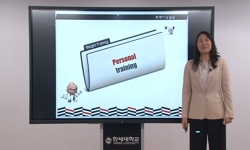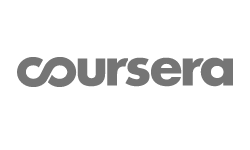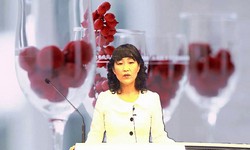[INTRODUCTION] This research was aimed at finding how to overcome weakness and decline of growth caused by lack of exercise in adolescents by improving their daily life habits. In this experiment, the levels of stress hormones - ACTH, GH, Testosterone...
http://chineseinput.net/에서 pinyin(병음)방식으로 중국어를 변환할 수 있습니다.
변환된 중국어를 복사하여 사용하시면 됩니다.
- 中文 을 입력하시려면 zhongwen을 입력하시고 space를누르시면됩니다.
- 北京 을 입력하시려면 beijing을 입력하시고 space를 누르시면 됩니다.

12주간 연속 및 비연속 순환운동이 남중학생의 호르몬 변화에 미치는 영향 = Effects of Continuous and Non-Continuous Circuit Exercise on the Hormonal Response of Middle School Boys
한글로보기https://www.riss.kr/link?id=A103687886
- 저자
- 발행기관
- 학술지명
- 권호사항
-
발행연도
2014
-
작성언어
Korean
- 주제어
-
KDC
513
-
등재정보
KCI등재
-
자료형태
학술저널
- 발행기관 URL
-
수록면
9-18(10쪽)
-
KCI 피인용횟수
4
- DOI식별코드
- 제공처
-
0
상세조회 -
0
다운로드
부가정보
다국어 초록 (Multilingual Abstract)
[INTRODUCTION] This research was aimed at finding how to overcome weakness and decline of growth caused by lack of exercise in adolescents by improving their daily life habits. In this experiment, the levels of stress hormones - ACTH, GH, Testosterone, Cortisol, Insulin- were observed by dividing students into two groups, a continuous circuit exercise(CE) group and a non-continuous circuit exercise(NCE) one apart from the regular physical education curriculum to verify the different effects between CE and NCE. [METHOD] This research was conducted by fourteen second grade students in G middle school in G City who were splitted into two groups of seven each, a CE group and a NCE one. Circuit training program was comprised of ten exercises involving five aerobic exercises and five resistance ones each – the frequency of CE (three times a week, once a day, 30-minute workout) and that of NCE (three times a week, three times a day, 10-minute workout) SPSS ver. 18.0 program was used for two-way RM ANOVA to process the data and the result were statistically significant at level of p<.05. [RESULT] The CE group has brought meaningful changes of Testosterone(p<.01) and Insulin(p<.001) after of 12 weeks. Comparison of two groups showed that CE increased more Insulin(p<.01) than NCE one because of the interaction effect. [CONCLUSION] This study revealed that there’s no difference of the hormonal changes between CE and NCE group except Testosterone and Insulin. The results obtained in this study say exercising is more related to the total amount of time rather than the method of CE and NCE. Therefor later, Studies should be done considering sex, age, the number of examines and diverse research objects like athletes
국문 초록 (Abstract)
[서론] 운동부족에 따른 체력문제를 청소년에 적용하여 스트레스 호르몬 ACTH, GH, Testosterone, Cortisol, Insulin 농도의 변화를 관찰하여, 일상 생활습관 개선을 통하여 극복할 수 있는 한 방법을 얻...
[서론] 운동부족에 따른 체력문제를 청소년에 적용하여 스트레스 호르몬 ACTH, GH, Testosterone, Cortisol, Insulin 농도의 변화를 관찰하여, 일상 생활습관 개선을 통하여 극복할 수 있는 한 방법을 얻고자 하는 것이다. [방법] 본 연구는 G지역 소재 G중학교 2학년 재학생 14명을 대상으로 연속(CE) 및 비연속적 순환운동(NCE) 그룹으로 각각 7명씩 두 그룹으로 분류하였다. 순환운동프로그램은 저항운동과 유산소운동 각각 5가지 총 10가지로 구성하여, 운동빈도는 연속적 순환운동(3회/주, 1회/일, 30분/회)과 비연속적 순환운동(3회/주, 3회/일, 10분/회, 90분/간격)을 나누어 실시하였다. [결과] 12주간 실행된 운동결과 연속적 순환운동그룹에서만 Testosterone(p<.01)과 Insulin(p<.001)에서 유의한 변화가 나타났다. 그리고 연속, 비연속적 순환운동 방법의 차이비교에서는 Insulin(p<.01)에서 상호작용효과가 나타나 연속적 순환운동이 비연속적 순환운동보다 증가한 것으로 나타났다. [결론] 연속 및 비연속 순환운동 방법에 따른 결과 인슐린에서만 연속순환운동그룹이 높게 나타났다. 따라서 청소년 시기에 연속 및 비연속적 운동방법의 차이가 뚜렷하지 않은 것으로 보아 규칙적이고 지속적인 총 운동시간에 더 의미를 둘 수 있겠다. 그리고 청소년은 물론 일반인도 운동부족에 의한 비만과 성인질환 발병 문제는 더 이상 운동시간이 없다는 것이 이유가 될 수 없을 것이다.
참고문헌 (Reference)
1 나승희, "트레드밀 걷기운동이 인슐린비의존형 당뇨환자의 혈당, Insulin 및 혈중지질에 미치는 영향" 한국스포츠리서치 17 (17): 609-614, 2006
2 장용수, "저항성 운동시 운동량의 차이가 혈중 성장호르몬, 테스토스테론, 코티졸의 분비에 미치는 영향" 한국체육학회 42 (42): 429-440, 2003
3 김동희, "장기간 운동이 비만 여중생의 신체구성 및 혈중 호르몬에 미치는 영향" 한국사회체육학회 23 (23): 279-295, 2005
4 장봉우, "웨이트 트레이닝 강도가 ACTH, Cortisol, Testosterone 분비에 미치는 영향" 한국체육교육학회 11 (11): 171-181, 2006
5 장봉우, "운동 강도가 성장 및 남성호르몬 분비에 미치는 영향" 한국체육과학회 16 (16): 437-445, 2007
6 이만균, "연속운동, 분할운동 및 저항성 운동이 운동 후의 혈압, 혈관탄성 및 혈액변인에 미치는 영향" 국민체육진흥공단 부설 한국스포츠개발원 19 (19): 21-36, 2008
7 전종원, "순환성 운동 프로그램을 통한 스트레스 호르몬 변화" 한국스포츠리서치 18 (18): 349-358, 2007
8 남수연, "성인비만증에서 저열량 식사요법과 병용한 성장호르몬의 치료효과" 12 (12): 571-572, 1997
9 이철원, "서키트운동 프로그램이 고령비만 노인의 신체조성, 혈중지질 및 간기능에 미치는 효과" 한국사회체육학회 45 (45): 913-922, 2011
10 이재식, "비만대학생의 최대운동 시 호흡 순환기능과 골밀도 및 혈액성분에 미치는 영향" 한국스포츠리서치 19 (19): 149-158, 2008
1 나승희, "트레드밀 걷기운동이 인슐린비의존형 당뇨환자의 혈당, Insulin 및 혈중지질에 미치는 영향" 한국스포츠리서치 17 (17): 609-614, 2006
2 장용수, "저항성 운동시 운동량의 차이가 혈중 성장호르몬, 테스토스테론, 코티졸의 분비에 미치는 영향" 한국체육학회 42 (42): 429-440, 2003
3 김동희, "장기간 운동이 비만 여중생의 신체구성 및 혈중 호르몬에 미치는 영향" 한국사회체육학회 23 (23): 279-295, 2005
4 장봉우, "웨이트 트레이닝 강도가 ACTH, Cortisol, Testosterone 분비에 미치는 영향" 한국체육교육학회 11 (11): 171-181, 2006
5 장봉우, "운동 강도가 성장 및 남성호르몬 분비에 미치는 영향" 한국체육과학회 16 (16): 437-445, 2007
6 이만균, "연속운동, 분할운동 및 저항성 운동이 운동 후의 혈압, 혈관탄성 및 혈액변인에 미치는 영향" 국민체육진흥공단 부설 한국스포츠개발원 19 (19): 21-36, 2008
7 전종원, "순환성 운동 프로그램을 통한 스트레스 호르몬 변화" 한국스포츠리서치 18 (18): 349-358, 2007
8 남수연, "성인비만증에서 저열량 식사요법과 병용한 성장호르몬의 치료효과" 12 (12): 571-572, 1997
9 이철원, "서키트운동 프로그램이 고령비만 노인의 신체조성, 혈중지질 및 간기능에 미치는 효과" 한국사회체육학회 45 (45): 913-922, 2011
10 이재식, "비만대학생의 최대운동 시 호흡 순환기능과 골밀도 및 혈액성분에 미치는 영향" 한국스포츠리서치 19 (19): 149-158, 2008
11 문희원, "단기간의 훈련 중단이 비만 중학생의 성장호르몬과 코티졸 분비변화에 미치는 영향" 한국스포츠리서치 15 (15): 1905-1918, 2004
12 임길병, "단기간 써키트 웨이트 트레이닝이 젊은 엘리트 골프 선수의 체력에 미치는 영향" 대한스포츠의학회 25 (25): 1-6, 2007
13 Paffenbarger, R. S. Jr, "The association of changes in physical-activity level and other lifestyle characteristics with mortality among men" 328 (328): 538-545, 1993
14 Ferrando, A. A., "Testosterone injection stimulates net protein synthesis but not tissue amino acid transport" 275 (275): 864-871, 1998
15 Lamb, D. R., "Synergistic interactions of physiologic increment of glucagon, epinephrine and cortisol in the dog" 63 (63): 114-123, 1984
16 Staron, R. S., "Strength and skeletal muscle adaptations in heavy-resistance-trained women after detraining and retraining" 70 : 631-640, 1991
17 Atherton, P. J., "Selective activation of AMPK-PGC-1alpha or PKB-TSC2-mTOR signaling can explain specific adaptive responses to endurance or resistance training-like electrical muscle stimulation" 19 (19): 786-788, 2005
18 Tanner, A. V., "Salivary and plasma cortisol and testosterone responses to interval and tempo runs and a bodyweight-only circuit session in endurance-trained men" 2013
19 Kotchen, T. A., "Renin, norepinephrine, and epinephrine responses to graded exercise" 31 (31): 178-184, 1991
20 Winder, W. W., "Regulation of hepatic production during exercise" 14 : 1-31, 1981
21 Westphal O, "Normal growth and growth disorders in children" 53 : 174-178, 1995
22 McMurray, R. G., "Nocturnal hormonal responses to resistance exercise" 72 (72): 121-126, 1995
23 Hartley, L. H., "Multiple hormonal responses to graded exercise in relation to physical training" 33 (33): 607-610, 1974
24 Farrell, P. A., "Increases in plasma beta-endorphin/beta-lipotropin immunoreactivity after treadmill running in humans" 52 (52): 1245-1249, 1982
25 Calcaterra, V., "Improved metabolic and cardiorespiratory fitness during a recreational training program in obese children" 26 (26): 271-276, 2013
26 김성수, "IGF-Ⅰ과 비만지표의 상관성 및 운동에 의한 변화" 16 : 271-280, 2001
27 Smilios I, "Hormonal responses after a strength endurance resistance exercise protocol in young and elderly males" 28 (28): 401-406, 2007
28 Raastad, T., "Hormonal response to high and moderate-intensity Strength exercise" 82 : 121-128, 2000
29 Crowley, M. A., "Hormonal regulation of skeletal muscle hypertrophy in rats: the testosterone to cortisol ratio" 73 (73): 66-72, 1996
30 Florini, J. R., "Hormonal control of muscle growth" 10 (10): 577-598, 1987
31 Kraemer. W. J., "Hormonal and growth factor responses to heavy resistance exercise protocols" 69 (69): 1442-1450, 1990
32 Rogol, A. D., "Growth hormone : physiology, therapeutic use, and potential for abuse" 17 : 353-377, 1989
33 Calles, J., "Glucose turnover during recovery from intensive exercise" 32 (32): 734-738, 1983
34 Watts, K, "Exercise training in obese children and adolescents: Current concepts" 35 (35): 375-392, 2005
35 Brooks, G. A, "Exercise physiology : Human bioenergetics and its application" John Willey and Sons, Inc 1984
36 Alekel, L., "Contributions of exercise, body composition, and age to bone mineral density in premenopausal women" 27 (27): 1477-1485, 1995
37 Pescatello, L. S., "American College of Sports Medicine position stand. Exercise and hypertension" 36 (36): 533-553, 2004
38 Padilla, J., "Accumulation of physical activity reduces blood pressure in pre-and hypertension" 37 (37): 1264-1275, 2005
39 Park, S., "Accumulation of physical activity leads to a greater blood pressure reduction than a single continuous session, in prehypertension" 24 (24): 1761-1770, 2006
40 ACSM, "ACSM’s Guidelines for Exercise Testing and Prescription" Lippincott Williams & Wilkins 2010
41 Ghanbari-Niaki, A., "A single circuit-resistance exercise has no effect on plasma obestatin levels in female college students" 29 (29): 487-490, 2008
42 이한용, "6주간의 단계적 웨이트 트레이닝 프로그램이 신체조성에 미치는 영향" 한국운동생리학회 12 (12): 71-81, 2003
43 김상훈, "12주간의 순환운동이 노인비만여성의 비만, 체력 및 대사증후군 지표에 미치는 영향" 한국노년학회 29 (29): 823-835, 2009
동일학술지(권/호) 다른 논문
-
예방정책으로서 운동실천 인센티브제: 독일 사례의 시사점
- 대한운동학회
- 김경원
- 2014
- KCI등재
-
지속적 및 간헐적 운동이 운동중과 운동후 에너지대사에 미치는 영향
- 대한운동학회
- 고성식
- 2014
- KCI등재
-
다관절의 하지 신전운동시 외측운동과 양측운동에 대한 근력과 근활성의 비교
- 대한운동학회
- 김용운
- 2014
- KCI등재
-
여성들의 계단내리기 시 계단높이와 가방무게 변화에 따른 지면반력 형태 비교분석
- 대한운동학회
- 현승현
- 2014
- KCI등재
분석정보
인용정보 인용지수 설명보기
학술지 이력
| 연월일 | 이력구분 | 이력상세 | 등재구분 |
|---|---|---|---|
| 2027 | 평가예정 | 재인증평가 신청대상 (재인증) | |
| 2021-01-01 | 평가 | 등재학술지 유지 (재인증) |  |
| 2018-01-31 | 학술지명변경 | 한글명 : 운동학 학술지 -> 아시아 운동학 학술지외국어명 : The Journal of Kinesiology -> The Asian Journal of Kinesiology |  |
| 2018-01-01 | 평가 | 등재학술지 유지 (등재유지) |  |
| 2017-02-09 | 학술지명변경 | 외국어명 : The Official Journal of the Korean Academy of Kinesiology -> The Journal of Kinesiology |  |
| 2015-01-01 | 평가 | 등재학술지 유지 (등재유지) |  |
| 2014-09-18 | 학술지명변경 | 외국어명 : 미등록 -> The Official Journal of the Korean Academy of Kinesiology |  |
| 2011-01-01 | 평가 | 등재학술지 선정 (등재후보2차) |  |
| 2010-01-01 | 평가 | 등재후보 1차 PASS (등재후보1차) |  |
| 2008-01-01 | 평가 | 등재후보학술지 선정 (신규평가) |  |
학술지 인용정보
| 기준연도 | WOS-KCI 통합IF(2년) | KCIF(2년) | KCIF(3년) |
|---|---|---|---|
| 2016 | 0.57 | 0.57 | 0.66 |
| KCIF(4년) | KCIF(5년) | 중심성지수(3년) | 즉시성지수 |
| 0.63 | 0.67 | 0.686 | 0.03 |




 KCI
KCI 스콜라
스콜라






